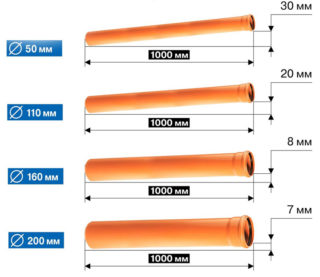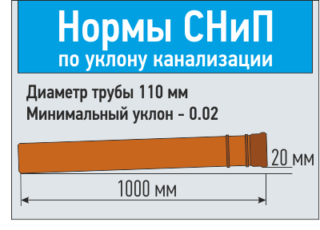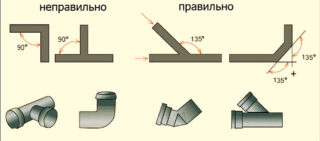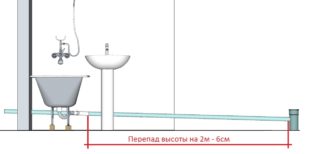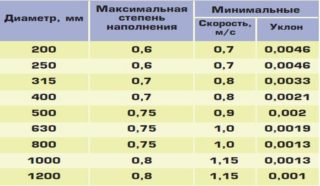When the sewerage system of the house is correctly calculated and installed, the residents do not have any questions about “how it works”. How to achieve this effect and ensure reliable, stable drainage?
What is the angle of inclination and why is it needed
The desired effect can be achieved by providing the required angle of inclination of the pipe. This is the difference in height at the inlet and outlet of the sewer system.
The slope of the pipeline gives the correct flow rate. The rate of movement of wastewater should be such that the liquid carries away sewage and denser flow elements. In this case, the angle changes depending on the diameter of the pipe. There are standards, the observance of which guarantees the efficient operation of the sewage system.
Slope guidelines
The smaller the pipe diameter, the greater the angle of inclination. So for a pipe with a diameter of 50 mm, the minimum slope should be 30 mm for each meter of length. And for a diameter of 200 mm, it will be 7 mm. The normal tilt angle can be up to 40% greater, but a significant excess is fraught with a violation of the efficiency of the system. With an increase in the angle, the speed of movement of wastewater increases. In this case, the liquid moves much faster than solid waste, there is a "separation effect", which means that the principle of self-cleaning of the pipe is violated. As a result, the channel becomes clogged.
The normal flow velocity is 1.43 m / s. Compliance with the slope standards ensures such a speed, and this is a guarantee of the operability of the sewer network.
Selection method and calculation of the optimal value
For a private house, a reckless design method is used. Here the pipe diameter is taken into account and the corresponding angle of inclination is fixed.
Each plumbing fixture is connected to the system with a pipe of the recommended cross-section. For a private house, this is a range of diameters from 32 to 110 mm. It is important that the cross-section of the drainage pipeline is not less than the cross-section of the outlet of the household appliance. For a toilet, this is 110 mm, for a kitchen sink, bath or shower stall - 50 mm, and even 32 mm will be enough for a washing machine.
Accordingly, for the 110th pipeline, the optimal design slope will be 0.02 m for each running meter. A pipe with a cross section of 50 mm should be inclined by 0.03 m (for each meter of length).
Calculation for apartments and houses separately
This arrangement greatly simplifies the design of the sewerage system. It is enough to ensure the minimum angle of inclination of the pipes. With the length of the local system (located within the apartment) not exceeding 5 m, the height difference is a maximum of 15 cm.
For a private house, the design calculation is more complicated. It is important to take into account the features of the installation of the internal and external pipelines.
For the external section of the system, which connects a septic tank or storage tank with the internal sewerage system of the building, there are separate standards. The pipe should be laid at a depth exceeding the freezing zone. For temperate latitudes, this is 1m. This depth excludes freezing of the system. If it is not possible to lay communications deep enough, it is necessary to provide heating of the pipeline. For this, a heating cable is laid in parallel with the sewage system, which ensures a normal temperature regime.
The internal sector of the sewer complex includes the following elements:
- plumbing fixtures equipped with sealed hydraulic seals;
- branch pipes laid with a slope;
- vertical riser that receives all branch channels;
- revisions providing emergency cleaning of the channel;
- fan ventilation pipe that ensures the removal of gases.
A rational combination of elements allows you to create an effective drainage system operating in gravity mode.
Typical mistakes and methods of solving them
Another common mistake for private houses is the lack of a ventilation fan outlet. With this design, there is no sufficient ventilation of the pipeline, the regular operation of siphons, shut-off valves is disrupted.
To eliminate the problem, you should organize the outlet through the roof, placing the upper edge of the pipe 500 mm above the roof plane.
The next typical problem is the wrong organization of the septic tank treatment system. Calculation of a multi-chamber system that provides sufficient productivity, additional treatment and disposal of treated water will save money during operation.
It is important to take into account seasonal fluctuations in the level of groundwater when organizing a storage tank. Neglecting to survey the soil can lead to drainage problems.
Careful, thoughtful calculation of sewer communications guarantees the correct operation of the system and ensures the comfort of use. This is especially important for an autonomous sewage system in a private house.

